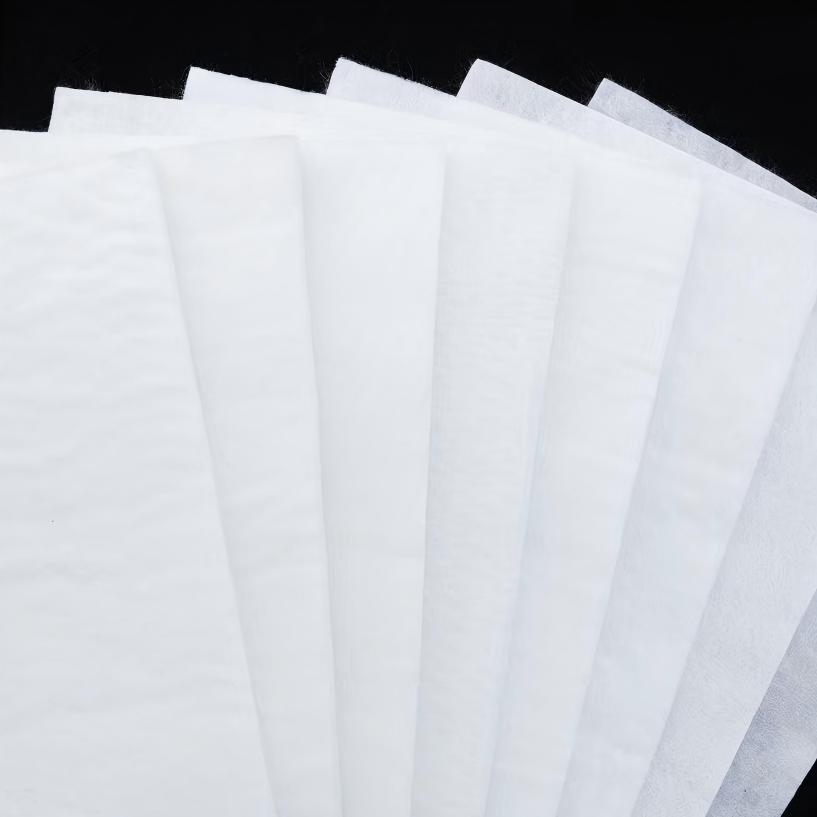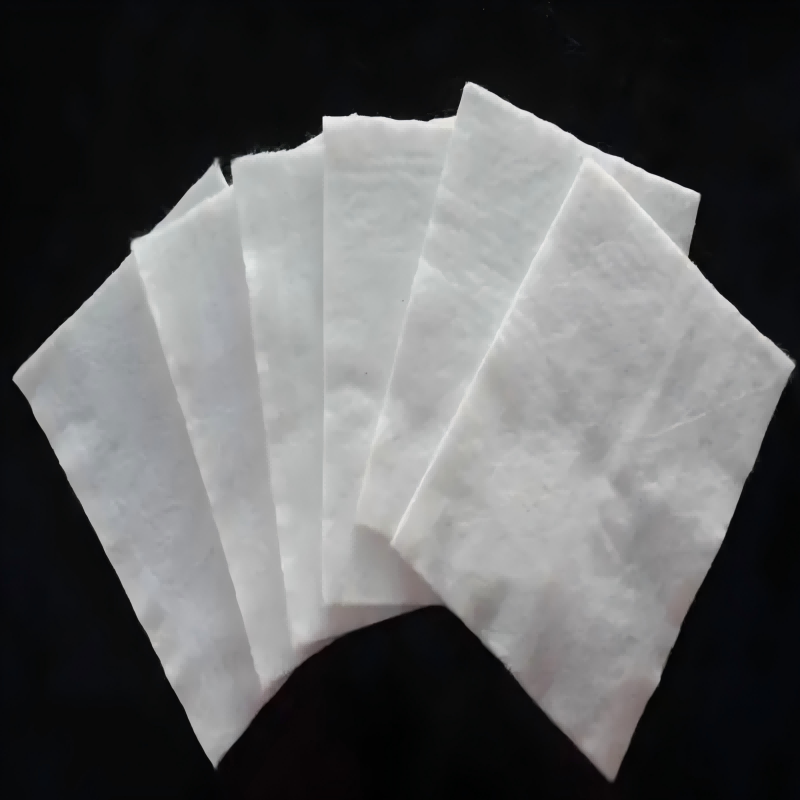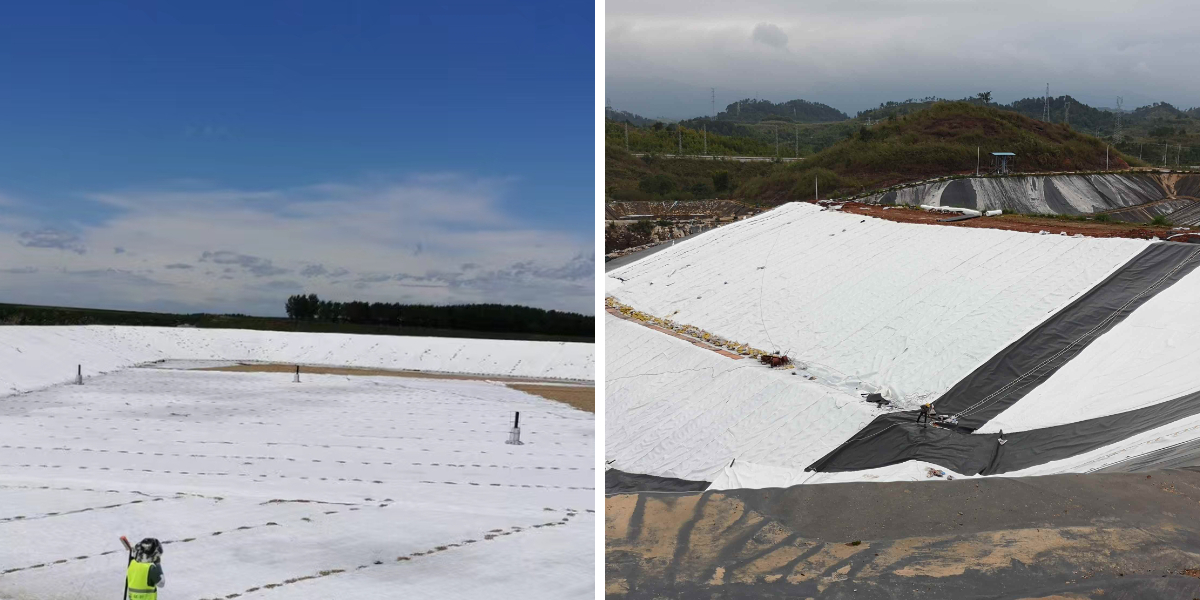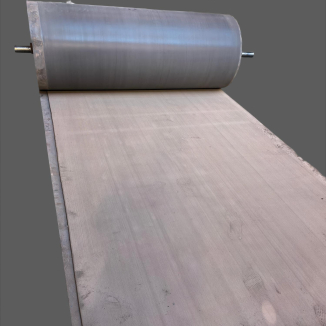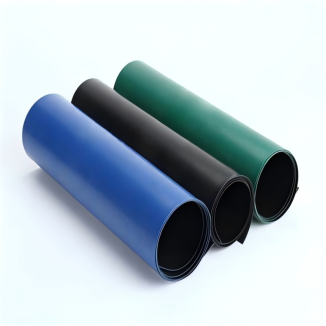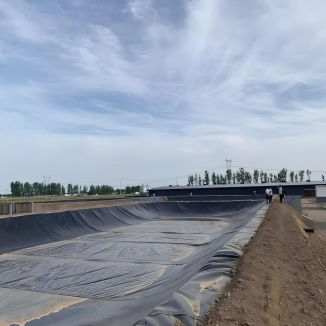Planter Geotextile
1. High strength: Good tensile, tear resistance, and burst strength.
2. Durability: corrosion-resistant, resistant to microorganisms and insect infestations, with a long service life in soil.
3. Permeability: Has good vertical and horizontal drainage capacity.
4. Easy construction: lightweight, coil packaging, high transportation and laying efficiency, fast construction speed.
5. Cost effectiveness: It can usually replace traditional sand and gravel filter layers, saving material, transportation, and labor costs, with significant economic benefits.
Product Introduction:
Planter Geotextile is a permeable geosynthetic material made from synthetic fibers (such as polypropylene, polyester, nylon, etc.) through processes such as needle punching or weaving. It is essentially "cloth used in civil engineering" and is one of the most widely used and fundamental materials in geotechnical engineering.
Main functions
The core functions of geotextiles can be summarized as follows:
1. Separation
Function description: Separate two types of geotechnical materials with different physical properties (such as gravel and soft soil) to prevent them from mixing with each other.
2. Filtration
Function description: While allowing liquid (water) to pass vertically, it effectively prevents excessive loss of soil particles.
3. Drainage
Function description: Use the pores inside the geotextile to form drainage channels, which collect and discharge liquids and gases inside the soil.
4. Reinforcement
Function description: Utilizing its high tensile strength and good toughness, it disperses the stress of the soil, limits the lateral displacement of the soil, and increases the strength and stability of the soil.
5. Other secondary functions: protection, anti-seepage (combined with geomembrane), etc.
Main types
According to different manufacturing processes and structures, geotextiles are mainly divided into two categories:
Manufacturing process: It is mainly composed of short fibers or long fibers arranged randomly, and then fixed by mechanical needle punching, thermal bonding, or chemical bonding methods.
Features: It looks like a blanket, isotropic (with similar performance in all directions), has good elongation deformation ability and vertical permeability.
Main purpose: Focusing on isolation, filtration, and drainage functions. Commonly used in roadbeds, drainage ditches, landfills, greening projects, etc.
Manufacturing process: Woven from fiber filaments or flat strips in a certain direction, with a structure similar to burlap.
Features: Clear latitude and longitude lines, high tensile strength, low elongation, stable structure, but the uniformity of pores is not as good as non-woven fabric.
Main purpose: Focusing on reinforcement and isolation functions. Commonly used in situations that require high-strength support, such as soft foundation reinforcement, reinforced soil retaining walls, dam engineering, etc.
3. Special types:
Knitted geotextile: rare.
Composite geotextile: Combining non-woven fabric with woven fabric, or with materials such as geogrids and geomembranes, to achieve multiple functions.
Product Parameters:
project | metric | ||||||||||
Nominal strength/(kN/m) | |||||||||||
6 | 9 | 12 | 18 | 24 | 30 | 36 | 48 | 54 | |||
1 | Longitudinal and transverse tensile strength / (kN/m) ≥ | 6 | 9 | 12 | 18 | 24 | 30 | 36 | 48 | 54 | |
2 | Maximum elongation at maximum load in longitudinal and transverse directions/% | 30~80 | |||||||||
3 | CBR top penetration strength /kN ≥ | 0.9 | 1.6 | 1.9 | 2.9 | 3.9 | 5.3 | 6.4 | 7.9 | 8.5 | |
4 | Longitudinal and transverse tearing strength /kN | 0.15 | 0.22 | 0.29 | 0.43 | 0.57 | 0.71 | 0.83 | 1.1 | 1.25 | |
5 | Equivalent aperture O.90(O95)/mm | 0.05~0.30 | |||||||||
6 | Vertical permeability coefficient/(cm/s) | K× (10-¹~10-), where K=1.0~9.9 | |||||||||
7 | Width deviation rate /% ≥ | -0.5 | |||||||||
8 | Unit area mass deviation rate /% ≥ | -5 | |||||||||
9 | Thickness deviation rate /% ≥ | -10 | |||||||||
10 | Thickness coefficient of variation (CV)/% ≤ | 10 | |||||||||
11 | Dynamic perforation | Puncture hole diameter/mm ≤ | 37 | 33 | 27 | 20 | 17 | 14 | 11 | 9 | 7 |
12 | Longitudinal and transverse fracture strength (grab method)/kN ≥ | 0.3 | 0.5 | 0.7 | 1.1 | 1.4 | 1.9 | 2.4 | 3 | 3.5 | |
13 | Ultraviolet resistance (Xenon arc lamp method) | Longitudinal and transverse strength retention rate% ≥ | 70 | ||||||||
14 | Ultraviolet resistance (fluorescence UV lamp method) | Longitudinal and transverse strength retention rate% ≥ | 80 | ||||||||
Product Applications:
1. Water conservancy engineering
Seepage prevention and filtration of dams and channels: prevent the loss of soil particles from the dam body and protect the stability of the dam body;
River regulation: Isolate different soil layers to reduce the erosion of river banks by water flow.
2. Transportation Engineering
Highway and railway subgrade: Enhance the bearing capacity of the subgrade and reduce settlement through reinforcement;
Road maintenance: As an isolation layer, it prevents the mixing of base and surface materials and extends the service life of the road surface.
3. Municipal and Environmental Engineering
Landfill site: serving as a filtering layer and isolation layer to prevent soil contamination by leachate;
Wastewater treatment: used as a filtration support for sludge dewatering and filtration systems.
4. Mining and Energy Engineering
Mine tailings dam: Strengthen the dam structure and control tailings infiltration;
Underground engineering (tunnels, culverts): Drainage, isolation of surrounding rock and lining, reducing leakage.
5. Agriculture and Landscape Architecture
Agricultural water conservancy: channel seepage prevention, soil and water conservation;
Landscape engineering: Drainage and soil stabilization of artificial lakes and golf courses.
Geotextile has become an indispensable material in civil engineering due to its excellent mechanical properties, environmental resistance, and multifunctionality. It plays a key role in ensuring engineering safety, improving construction efficiency, and reducing costs, and its application fields are still expanding.



